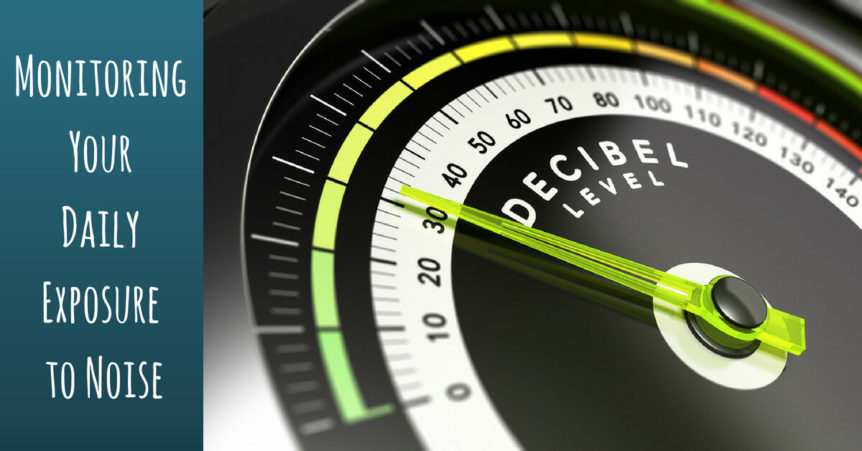We are surrounded by sounds every day, at home, at work, during our commute, and in our leisure time. Many of the sounds we hear do not pose a hazard to our hearing, but some do. Repeated exposure to sounds that are too loud can cause permanent hearing damage or increase the risk of age-related hearing loss later in life. In a 2011-2012 CDC study, it was found that as many as 40 million adults (24 percent) have hearing loss in one or both ears as a result of noise exposure.
In order to safeguard our own hearing as well as that of our loved ones, it is important to understand when noise is loud enough to cause hearing damage, and what steps we can take to protect our ears in these instances.
What is the recommended noise exposure limit at work?
In terms of workplace noise exposure, The National Institute for Occupational Safety and Health (NOISH) has set the safe exposure limit as eight hours of exposure to sounds of 85 decibels or lower. However, it should be noted that some people’s ears are more susceptible to hearing damage and could incur hearing loss at this level. The safe amount of listening time for a sound decreases as decibels increase. On the NOISH website, it is broken down as follows:
Time to reach 100% noise dose Exposure level per NIOSH REL
8 hours 85 dB(A)
4 hours 88 dB(A)
2 hours 91 dB(A)
60 minutes 94 dB(A)
30 minutes 97 dB(A)
15 minutes 100 dB(A)
Most noise-related hearing damage happens slowly over time and can be hard to detect at first. However, hearing damage can also happen instantaneously if a noise is loud enough, such as a gunshot, explosion or firework.
How to Protect Your Hearing
Use safe listening practices
With the popularization of technology, devices such as music players are often listened to at unsafe volumes and for prolonged periods of time. Regular participation in these activities poses a serious risk of permanent hearing loss. In fact, the World Health Organization (WHO) estimates that a billion young people worldwide could be at risk of hearing loss due
to unsafe listening practices. Protecting your ears (and your children’s ears) against future hearing loss means using safe listening practices, being an educator and setting an example with your own behavior.
- Keep the volume down. To a determine a safe listening level on your personal audio device, you should set the volume at a comfortable level in a quiet environment, to no more than 60 percent of the maximum volume. If someone near you needs to raise their voice to make themselves understood, the volume is too high. It is also recommended that you take short listening breaks and limit the total time you spend on your personal audio device each day.
- Don’t turn up the volume to mask noise. In a recent study, listening to loud music to mask noise while on public transport was shown to increase the risk of noise-induced hearing loss. The authors of the study noted that “mass transit commuters are regularly exposed to excessive noise levels and personal listening devices add further stress on the auditory system as commuters listen at high volume levels to mask the background noise encountered during their daily commute.” By turning up the volume in areas of high noise, they said, commuters are “creating further risk of noise-induced hearing loss”. To avoid turning up the volume too high to drown out background noise, invest in a good pair of noise-cancelling headphones.
Download an app to check sound levels
Installing a decibel monitoring app on your iOS device is an easy way to quickly assess the noise level of your surroundings and determine if hearing protection is needed. An app like Decibel X can give you a fairly accurate decibel reading, whether you are at a concert, school assembly, sports event, or even on your daily commute.
If it sounds too loud, it IS too loud
If you don’t have a smartphone and are wondering how you can monitor the noise around you, a good rule of thumb is to trust your gut. If the noise is overwhelming or hurting your ears, or if you need to shout to be heard, your hearing could be damaged over time.
Dr. Daniel Fink, a leading noise pollution advocate in the Los Angeles area, and founder of The Quiet Coalition (an organization of science, health and legal professionals concerned about the impacts of noise on health, environment, learning, productivity and quality of life in America) offered some advice on this issue, particularly in regards to sporting events: “If it sounds too loud, it IS too loud. [Football] fans should bring their own earplugs or earmuffs hearing protection to both professional and college football games.”
If you commonly find that your ears are ringing after meeting friends for drinks or going to concerts, this is a sure sign that hearing damage has occurred.
Carry hearing protection with you
Foam ear plugs are inexpensive and can be found at any drug store. Buy a couple of pairs and keep them in convenient locations, such as your purse, pocket, glovebox, or sunglasses case. Another option is to buy earplugs which come in a small case that attaches to your keys. You can set a good example for your friends and family by putting them in whenever you know you’ll be in a noisy environment, such as when you’re attending a football game or taking part in a leisure activity such as snowmobiling or hunting.
If you want to be fully in control of your hearing, get a hearing evaluation annually to monitor for any hearing changes. If you find you have already sustained some hearing damage, it is still possible to slow its progression and protect the hearing you still have by taking the proper steps. Speak to us at Custom Hearing Solutions about the best ways to safeguard your hearing, and to find out if hearing loss treatment is needed.

